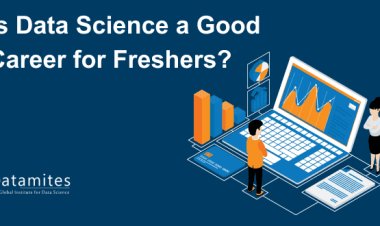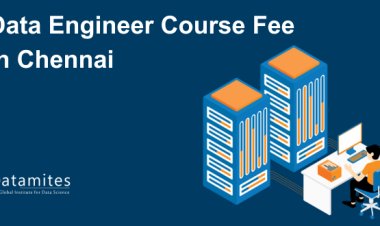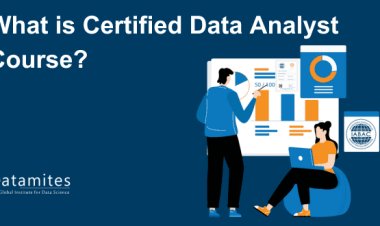Machine Learning Vs Deep Learning
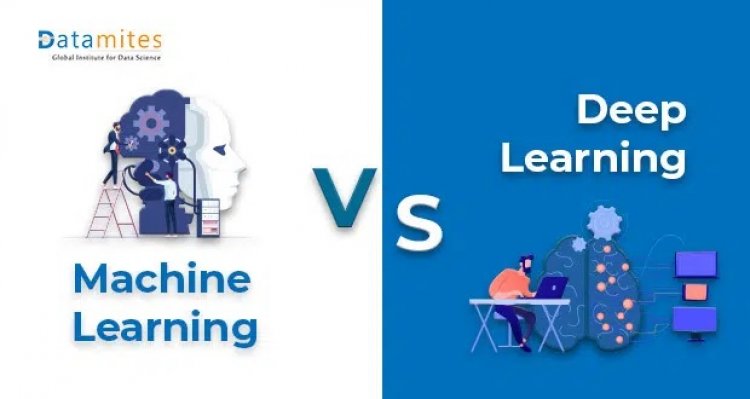
Technological tools used today are a little bit smarter, like humans. Like smartphones, smart TV, smart watch… Do you ever wonder how this is possible? Introducing human-like intelligence to things can be made possible through Artificial Intelligence (AI).
AI uses certain methods to accomplish this, either a Rule-based or Learning-based approach. Rule-based use set of rules to mimic intelligence and need explicit programming. On the other hand, the Learning-based approach is more ‘natural’ with the term ‘Intelligence’, because the model becomes intelligent through ‘learning’ a specific task in the same way as humans. Most AI applications that we use are based on ‘Learning’ approaches. More specifically either Machine learning or Deep learning.
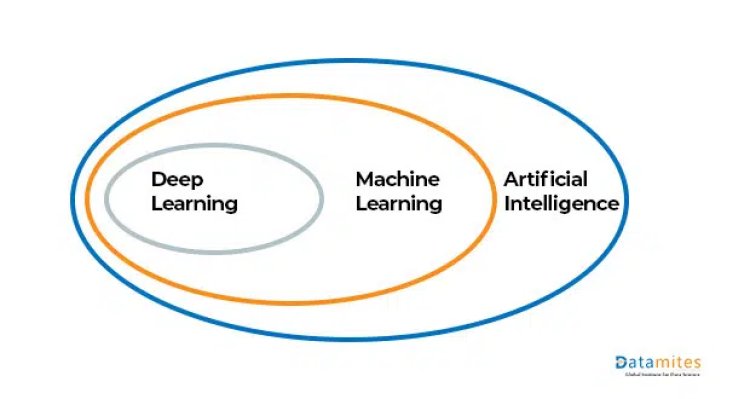
Machine learning is a subfield of Artificial Intelligence. Deep learning is a subfield under Machine learning. In another way, we can distinguish ML and DL with an entity called Artificial Neural Network (ANN).
What is Machine Learning?
“…what we want is a machine that can learn from experience” – Alan Turing
Machine learning is a general term used to denote machines learning from data. It is the intersection of computer science and statistics that aims to make machines (computers) able to perform tasks without the need for explicit programming, instead, they recognize patterns that are hidden in the data so they can make predictions once new data arrives. In another way, machine learning is the process of making machines capable of doing tasks by ‘learning’ from data. It is accomplished through mathematical algorithms and data. Here data is usually structured and can be present in rows and columns.
Machine learning uses various algorithms for modeling. Most commonly used classical algorithms are Linear Regression, Logistic Regression, KNN, SVM, Decision Tree, K-Means, and PCA. Based on which type of problem is solved; either regression, classification, or clustering, the selection of algorithms will be different. In general, the learning process of these algorithms can either be supervised, semi-supervised, unsupervised, or reinforced, depending on the data being used to feed the algorithms and the level of human intervention.
Check out the video: Measure purity of a node in Decision Tree Algorithm – Machine Learning

What is Neural Network & Types of Neural Network – Machine Learning & Data Science

What is L2 Regularization? / Ridge Regression / L2 Penalty?
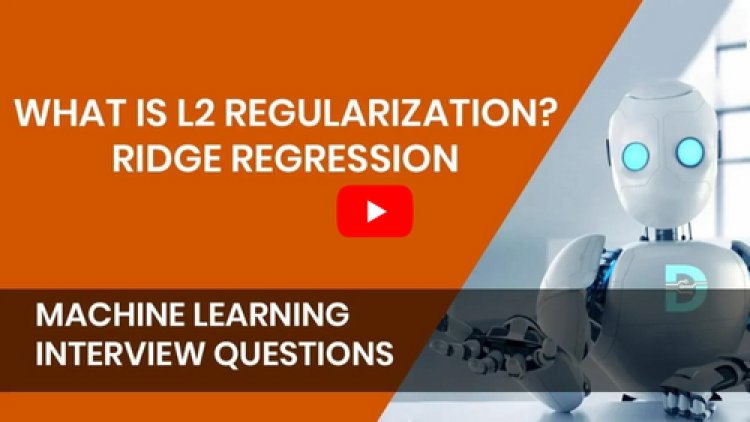
Let’s go through an example to know how machine learning works. Consider a traditional machine learning algorithm, something as simple as linear regression. For instance, imagine you want to predict your score in Mathematics in your academic annual exam based on the number of hours you are studying in a day. In the first step, you have to define a function, e.g. income = y + x * the number of hours. Then, give a set of training data to your algorithm. This could be a simple table of data on some students’ number of study hours and their associated scores in that subject. Next, you will see a prediction line by your algorithm, e.g. using an ordinary least squares (OLS) regression. Now, you can give test data to your algorithm, e.g. your number of study hours, and let it predict your exam score.
While this example sounds simple it does count as machine learning – and yes, ordinary mathematics mainly statistics and probability is the main driving force behind machine learning algorithms. The algorithm learned to predict without being specifically programmed, only based on patterns and inference. These trained algorithms can be called ‘models’ which try to map learned patterns with labels to make a prediction.
Watch the video: What is Machine Learning and How does it work?
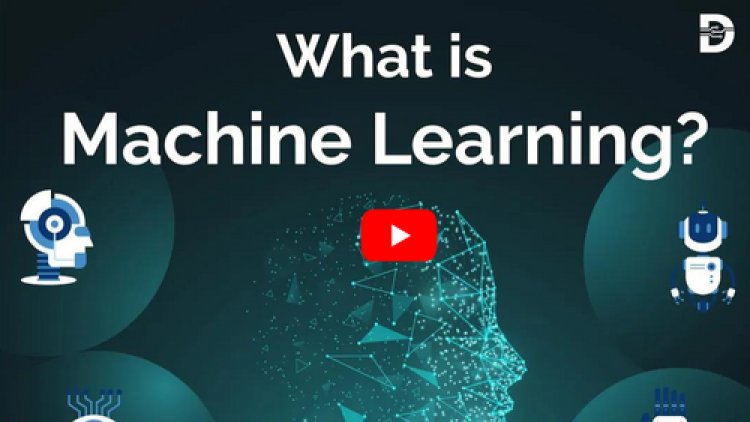
What is Deep Learning?
In Machine learning, machines can perform tasks without being explicitly programmed, but the machines still think and act like machines. Their ability to perform some complex tasks; gathering data from an image, video, voice, or text is still not capable as humans are.
Deep learning excites all AI enthusiasts. It is the only learning method that has so far been implemented that is not full but at least mimics the human brain in its structure and working (that we know till today, the fact is humans still don’t know how their brain works completely!).
“I have worked all my life in Machine Learning, and I have never seen one algorithm knock over benchmarks like Deep Learning” – Andrew Ng
“Deep Learning is an algorithm which has no theoretical limitations of what it can learn; the more data you give and the more computational time you provide, the better it is” – Geoffrey Hinton
Deep learning models introduce an extremely sophisticated approach to machine learning and are set to perform complex tasks that traditional machine learning can’t do but a human could do. In another way deep learning act as a bridge between traditional machine learning to human intelligence. Like the human brain uses neurons and neural networks to transfer and process input impulses, Deep learning models also use neurons called nodes, a network of these nodes called Artificial Neural Network (ANN) that can transfer and process input data. The input data after a series of processings is transformed into a non-linear output that is increasingly abstract. A neural network is the building block of all deep learning structures.
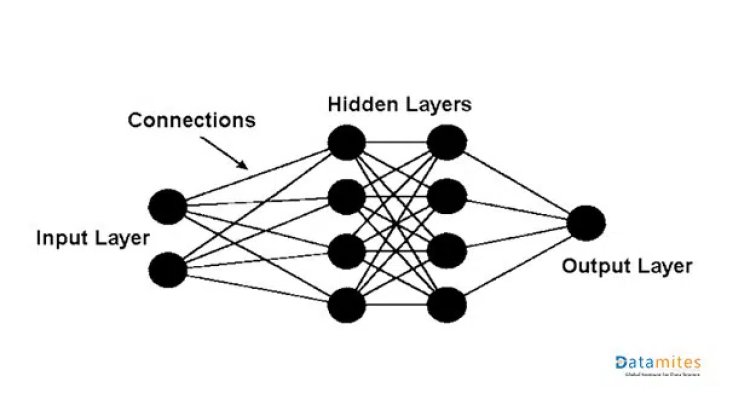
Consider the above ANN image as an example. The leftmost layer is called the input layer, the rightmost layer of the output layer. The middle layers are called hidden layers because their values are hidden, unlike the training input and output. In simple terms, calculated values by hidden layers are used by the network to perform its “magic”. The network is “deeper” if it has more hidden layers between the input and output. In general, the “deep” in deep learning is referring to the depth of layers in a neural network. A neural network that consists of more than three layers inclusive of the inputs and the output can be considered a deep learning algorithm.
In deep learning, there are mainly three classes of neural networks, namely Artificial Neural Network (ANN), Convolutional Neural Network (CNN), and Recurrent Neural Network (RNN).
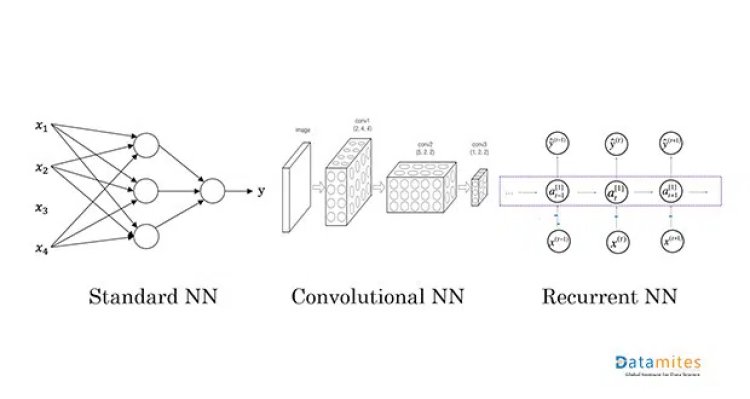
- Artificial Neural Network: This is the most fundamental class of neural networks. More than three sequential aligning of this structure are used to construct deep neural networks. It is a group of multiple nodes or neurons at each layer. ANN is also known as a Feed-Forward Neural Network or simple neural network because inputs are processed only in the forward direction. This type of neural network is the simplest type of neural network.
- Convolutional Neural Network: Most popular models used today uses this network structure. It is used in computer vision to process images or video inputs. This neural network computational model uses a simple neural network and contains one or more convolutional layers that can be either entirely connected or pooled. Convolutional layers use different filters on images to extract information or features from images results a feature map.
- Recurrent Neural Network: This is more complex compared to previous networks. Here the output from the previous step is fed as input to the current step. Unlike traditional neural networks where all the inputs and outputs are independent of each other, in RNN both depend on each other through a hidden state which remembers some information about a sequence.
Some of the differences between machine learning and deep learning
- Human Intervention: Machine learning requires more ongoing human intervention to get results specifically for feature extraction and selection. Deep learning is more complex to set up and feature extraction is done by the neural network itself so requires minimal intervention.
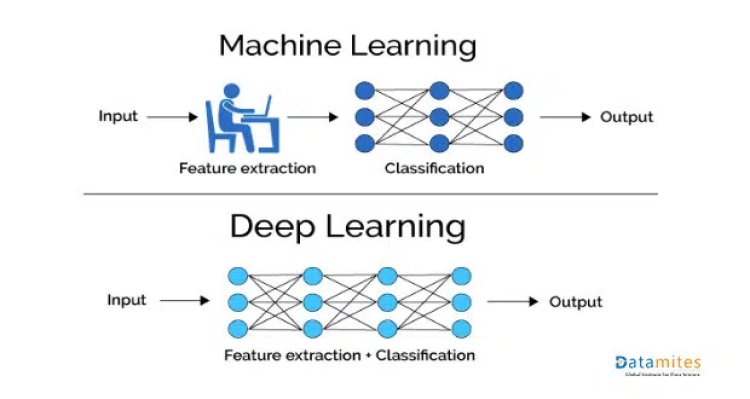
- Performance: Machine learning has limited performance even though data is huge, i.e it can’t leverage abundant data generated from various processes, but deep learning can do this. Deep learning models can increase performance with an increase in the amount of data.
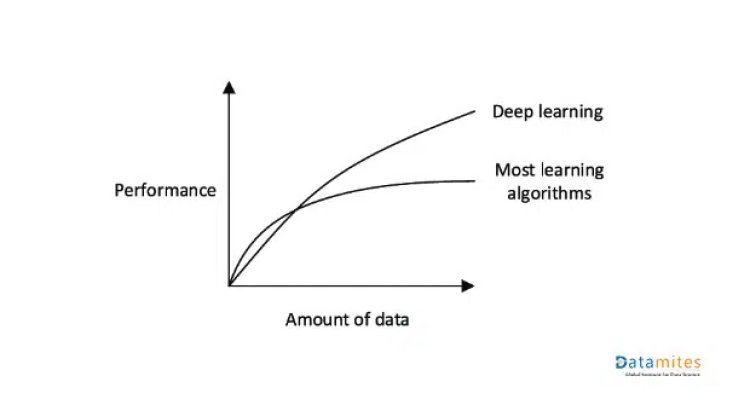
- Hardware: Machine learning programs tend to be less complex than deep learning algorithms and can often run on conventional computers, but deep learning systems require more powerful hardware and resources. This power demand has meant increased use of graphical processing units. GPUs are useful for their high bandwidth memory and ability to reduce delay in memory transfer due to parallelism in processing.
- Time: Machine learning systems can be set up and operate quickly but may be limited in performance. Deep learning systems may take more time during training setup but can generate results instantaneously.
- Approach: Machine learning uses structured data and traditional algorithms like linear regression. Deep learning employs neural networks and is built to accommodate large volumes of structured as well as unstructured data.
- Application: Traditional machine learning techniques also have many applications in our daily life such as weather forecasting, Price prediction, Image classification, and Anomaly Detection. Complex and autonomous programs like AI chatbots, voice assistants like google home and amazon Alexa, face recognition, self-driving cars, or robots that perform advanced surgery are enabled by deep learning.
Common in Machine Learning and Deep Learning
One of the fundamental abilities of the AI model is to be ‘self-reliant’. Machine learning and Deep learning can break down into subsets based on how much ongoing human help is involved. These are various types of learning techniques in Machine learning and Deep Learning namely Supervised learning, Semi-supervised learning, Unsupervised Learning, and Reinforcement Learning.
- Supervised learning: A machine is trained under the supervision of a human (Data scientist) by feeding labeled data This type requires the most ongoing human participation hence the name ‘supervised’. Most of the real-world applications of machine learning are based on this type.
- Semi-supervised learning: Here, a mixture of correctly labeled data and unlabeled data is given to the machine, and it searches for patterns on its own. The labeled data serves as ‘guidance’ to learn pattern mapping, but they do not issue ongoing corrections.
- Unsupervised learning: It takes a further step by using unlabeled data instead of labeled data where the machine has the freedom to find patterns and associations as it sees the best matching. Mainly used for clustering data and dimensionality reductions.
- Reinforcement learning: In above mentioned three types of learning, there is no ‘consequence’ to the model if it fails to properly understand or categorize data. But Reinforcement learning uses another approach similar to a child at school, it received positive feedback when it did the right thing, and negative feedback when it did the wrong thing. Here machine would begin to figure out how to get specific tasks done through trial-and-error, knowing it’s on the right track when it receives a reward (for example, a score) that reinforces its good or get to know if it’s on the wrong track when receiving punishment (negative pint)
For further references:
BUILD A TENSORFLOW OCR IN 15 MINUTES WITH DEEP LEARNING TECHNOLOGY
Different Types of Feature Scaling and Its Usage?
Outlier Detection and Its importance in Machine learning
Endnotes
From the above, you can conclude what is Machine learning and Deep learning. Both will affect our lives for generations to come and virtually every industry will be transformed by their capabilities. Dangerous tasks like space travel or working in harsh environments might be entirely replaced with machine involvement.
I think you might be a step closer to deep learning in curiosity and we can see how potential deep learning is compared to machine learning. I think this potential is only because of its flexibility and complexity in its design which in turn points to the human brain. More specifically, methods that mimic nature have high potential. Here you can see how each discovery in AI makes a big breakthrough in humans at present and makes planning for the future.
Being a prominent data science institute, DataMites provides specialised training in topics including deep learning, machine learning, artificial intelligence, the internet of things, and Python. Our Machine Learning Courses at DataMites have been authorised by the International Association for Business Analytics Certification (IABAC), a body with a strong reputation and high appreciation in the analytics field.

 Datamites Team
Datamites Team 